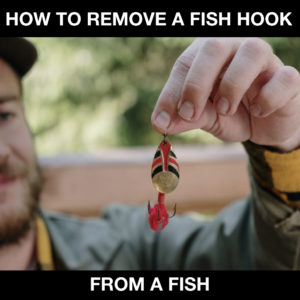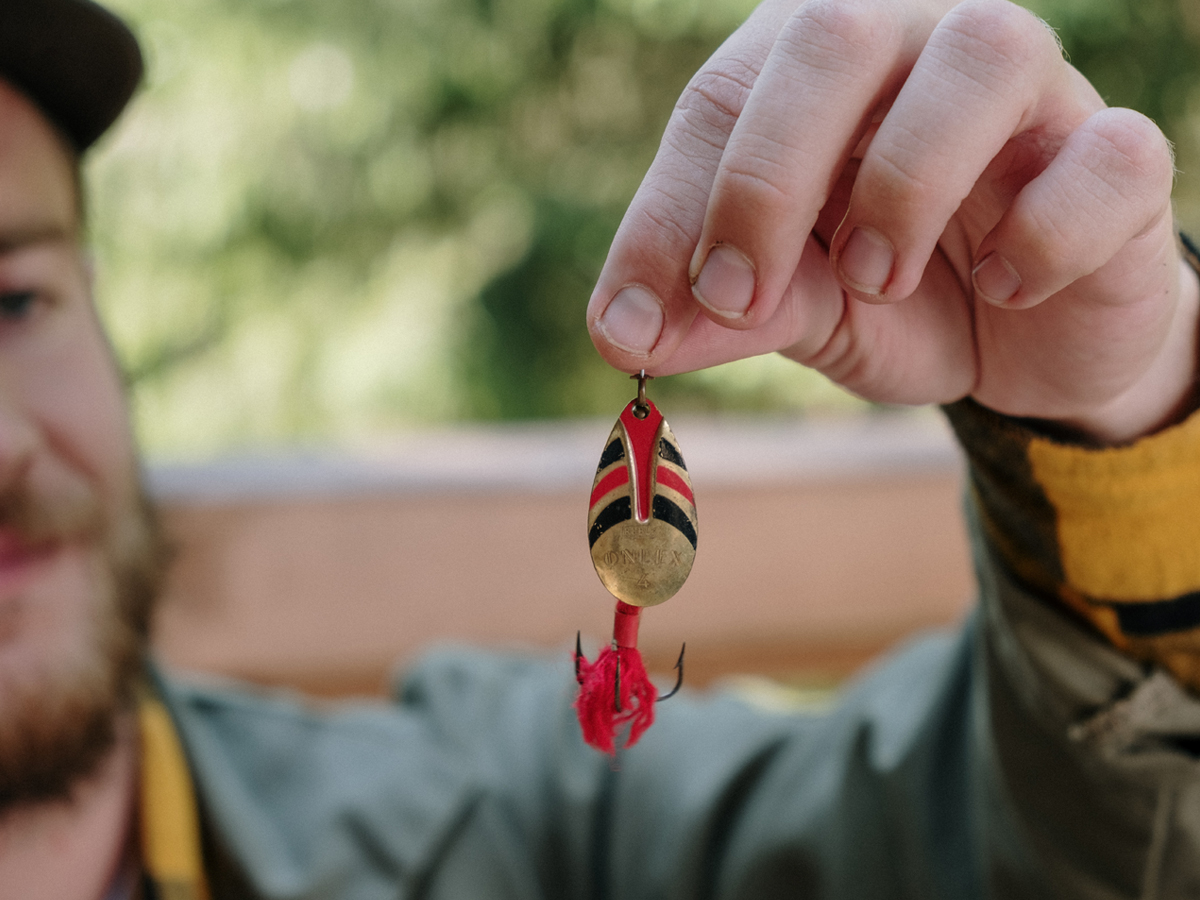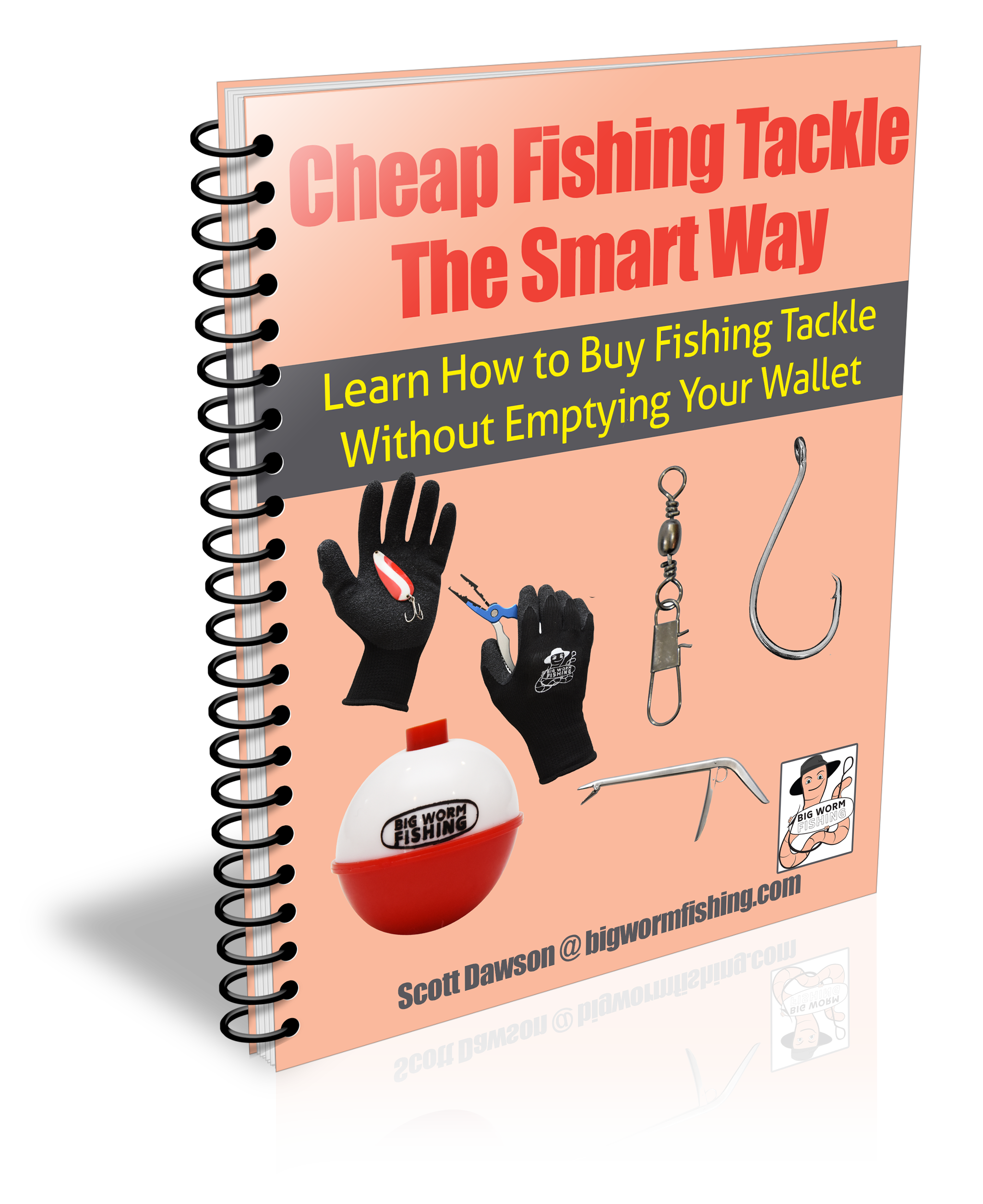Catching fish is one of the most exciting experiences you can have outdoors. All of the hard work you put in to get to your fishing spot, using the right bait and making the perfect cast all come into play to land that perfect fish. However, now that you have landed a fish the question becomes how do you remove a hook from a fish? Here are 10 easy steps to help you remove the hook from the fish.
10 STEPS ON HOW TO REMOVE A HOOK FROM A FISH

PLAN YOUR HOOK TYPE
One of the best things you can is prepare in advance for removing the hook from the fishes mouth. What I mean is that if you use the proper hook you can actually make this job easier. Just like anything else in lift having the right equipment can make any task easier.
To start you need to understand there are several types of hooks for fishing. Two of the common types are “J” hooks and “circle hooks”. The J hook gets its name because it is formed in the shape of the letter J. It has one long end where the fishing line is attached to and the other end has a curved end with the point. These are probably the most common types of hooks. However, due to their design they are more prone to getting hooked deep into the fish. This is because they are more narrow in design thus the fish can swallow this hook deeper.
A deep hooking is great if you plan to keep your fish but if you are doing a catch and release method you may chose something different. You certainly don’t want to be recklessly causing fish to die that you are just throwing back into the water.
The other hook type is a circle hook. The circle hook design appears much more like the letter “C” vs the letter “J”. This design is typically wider in width so it less likely to go super deep into a fishes mouth unless you are using a much smaller hook than the type of fish you are going for.
DON’T WAIT TO LONG
Another thing you can do to help plan in advance of getting the hook out of a fishes mouth is do not wait too long to set the hook on a fish. Yes, it is important to give fish some time to swallow the hook so that it is inside its mouth before setting the hook.
However, if you let the fish sit with the hook in its mouth for a long time it is more likely that the hook will go deep inside of the fish and catch on its gills or guts. Once this happens it will be much more difficult to remove the hook from the fish.
Again, you want to consider the health of the fish with this. If your intent is to keep the fish you catch it might not be as much of a problem if it goes deep and the removal of the hook causes the fish to die. But if you are doing catch and release then you should pay proper care to not cause harm to the health of the fish.
GET A GRIP
When you have a proper grip on the fish it will be much easier to easily remove a hook from the fishes mouth. A freshly caught fish is going to be flopping and wiggling which can make this task very difficult. However, when you grip a fish tightly the fish will naturally hold more still and be less likely to wiggle out of your hands.
Now the type of grip you take on a fish will depend on the type of fish you catch. For example, bass can often be gripped by their lips because they do not have large pointy teeth that will cut or poke you.
I often put my thumb on the inside of the lip and use my other fingers to grip the outside portion of the lip. When you do this to a bass it will open its mouth very wide and make it easy to reach inside of the mouth. Many times with spinner bait bass will be hooked on the lip so you can simply use your free hand to remove the hook.
Other fish with sharp teeth cannot be gripped by the lip. For example, northern and walleye are aggressive predator fish and have needle like teeth that would be very painful if you were to get poked by them.
To handle fish like this you could get a firm grip of them from the top down by gripping just behind their gills with the palm of your hand on the top of their back. This way you are gripping the front 1/3 of the fish so even if they wiggle while you are holding them it will only be their tail that flops but you will have their mouth in a fixed position. I actually like to squeeze the fish extremely tight with my hand as I do this. It seems like the fish try and squirm less the tighter of a grip you have.
For even larger fish you may want to set them on the ground or on the floor of your boat and step on them with your shoe. Large fish may be difficult to hold up and could really flop around. Stepping on them should help hold them in place well and then you will have two hands free to work on the task of removing the hook
PROTECT YOUR HANDS
Before reaching your hands into the mouth of a fish you want to be sure that you properly protect your hands from cuts and pokes. This is particularly true when you catch a fish that has large teeth. To protect your hands I would highly getting yourself a nice pair of fishing gloves.
A well designed pair of fishing gloves will have a thick coating on them that will help reduce the chances of punctures from teeth on your hands. The other great thing about the coating on good fishing gloves is they often provide a textured grip to help you have a more secure hold on the fish so it does not slip out of your hands.
One of the best pairs of fishing gloves is our Big Worm Fishing coated fishing gloves that you can get by clicking here. These are a one size fits most and they have a thick layer of texturized coating on the palms and fingers to keep you protected all while having a secure grip on your fish.
HOOK REMOVER TOOL
Another useful item to have when removing hooks from a fish is a fish hook remover tool. There are many types of fish hook remover tools on the market but the main thing for any of them is they allow you to reach deep into the mouth of the fish without actually having to risk having your fingers inside the mouth.
One type of fish hook remover tool is a squeeze type. The squeeze type has a small J shape on the end where you hook the end of the J around the hook and then you squeeze and it will pull the hook through the skin of the fish. The only downside about this type of tool is that if you have hooked a vital piece of the fish it could rip that part of the fish and cause it to die.
The other type of hook remover tool has more of an end that is like a needle nose piers but has grip teeth. They actually look like a snakes mouth that you can then reach deep inside of the fish, squeeze the handle and it closes the grip on the hook. Once it is secure you will be able to easily maneuver the hook out.
Big Worm Fishing offers this style of fish hook remover. It is made out of stainless steel and has a very long shaft that allows you to reach deep into the mouth of almost any type of fish. You can grab yourself the Big Worm Fishing hook remover here.
THE TWIST
As you prepare to remove the hook from the mouth of the fish you want to first examine how the hook is attached inside of the fish. Sometimes fish hooks can get caught in very strange ways so you need to see what is going on in order to plan its route out.
If the hook is just barely hanging on simply grabbing the hook and making a light pull or twist will remove the hook. Other times the hook might be deep inside the flesh of the fish and will require more work.
Many times you may actually need to push the hook just slightly deeper into the mouth to get the hook to release. This is because the hook end will need to go back out the opposite way in which it came in. So by pushing down slightly it will force the hook to go back out the hole in the flesh that it came in through.
KEEP OR RELEASE
The other consideration when removing a hook from a fishes mouth is if you are going to keep the fish or if you are going to release it back into the water. If you are doing a catch and release then you really do want to pay particular care in the removal of the hook.
There may be may reasons that you plan to release the fish. Perhaps you caught species of fish that is out of season, you don’t like the taste of or it is to small or to big. Regardless of the reason when you are releasing the fish you should really try and use as much care as possible so that the fish has the best chances of survival.
However, if you are planning on keeping the fish to eat it is not as necessary to not damage the fish when removing the hook. After all if it will be on your dinner plate in a few hours it simply does not matter if you have to be a little more aggressive with your tactics in getting the hook removed.
Sometimes the severity and depth of the hook will determine if you want to keep the fish or not. For example, if the fish was borderline on size for you to keep but it was really hooked badly and the fish was bleeding or you had to rip the hook out of the mouth then you may want to just keep the fish since it would not survive anyway you release it.
NEED FISHING PRODUCTS?
Click here to see all of the Big Worm Fishing Products to help you have a successful fishing trip.



